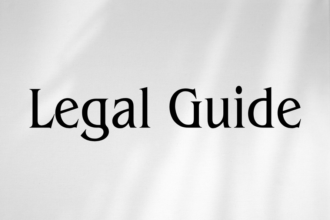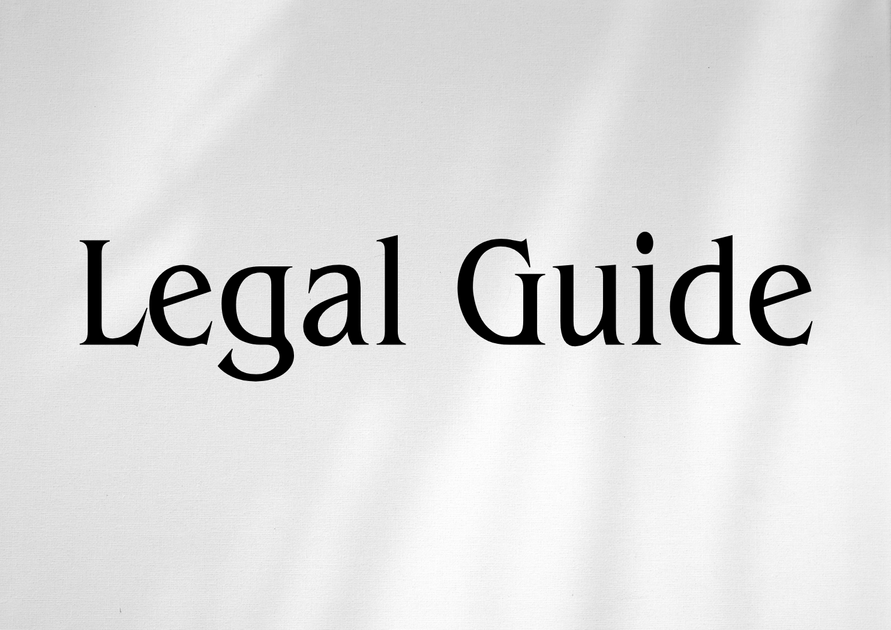Introduction
In the dynamic landscape of Gulf cooperation and regional enterprise, aviation has become a crucial pillar supporting Qatar’s ambitious economic diversification and international engagement. Whether airliners, corporate jets, logistic operators, or maintenance services, stakeholders face an ever-evolving framework of safety regulations and compliance mandates. As the regional aviation sector expands—often intertwined with UAE-based interests—awareness of Qatar’s aviation safety regulations is not merely advantageous; it is essential for legal compliance, business continuity, and risk management.
Given the close economic ties between the UAE and Qatar, regulatory shifts in Qatar wield implications for UAE-based operators, multinational businesses, and executives managing cross-border aviation portfolios. Recent regulatory updates in Qatar’s aviation law underscore increased scrutiny on international compliance, safety management systems, and operator accountability. UAE organizations must align their understanding of Qatar Civil Aviation Authority (QCAA) standards with UAE General Civil Aviation Authority (GCAA) protocols to ensure seamless—and legally defensible—operations.
This consultancy-grade guide delivers authoritative analysis of key Qatari aviation safety regulations in 2025, with practical insights tailored to the UAE market. It references official sources, offers compliance strategies, and compares old and new frameworks to empower legal practitioners, HR managers, and corporate executives to navigate cross-jurisdictional regulatory demands with confidence.
Table of Contents
- Overview of Qatar Aviation Safety Regulations
- Regulatory Framework: QCAA and Key Legal Instruments
- Recent Legal Updates and 2025 Amendments
- Key Obligations for Operators and Stakeholders
- Comparing Qatar and UAE Aviation Safety Laws
- Practical Compliance Considerations for UAE Businesses
- Case Studies and Hypothetical Scenarios
- Risks of Non-Compliance and Legal Liabilities
- Strategic Compliance Recommendations
- Conclusion and Future Outlook
Overview of Qatar Aviation Safety Regulations
Qatar’s civil aviation sector is governed by a sophisticated legal and regulatory framework, aimed at harmonizing with global ICAO (International Civil Aviation Organization) standards while reflecting regional security and operational priorities. The primary legislation includes:
- Civil Aviation Law No. 15 of 2002: The foundational statute establishing the regulatory authority, aircraft registration, airworthiness, operation requirements, and penalties for violations.
- Qatar Civil Aviation Authority Regulations (QCAA Regulations): Derived from the Civil Aviation Law and updated through ministerial decisions, these outline detailed safety, technical, and operational protocols.
- QCAA Safety Directives and Circulars: Continuous regulatory instruments targeting specific risks, safety management systems, or emergent hazards (such as COVID-19 response or unmanned aircraft operations).
Compliance with Qatari law is mandatory for all aircraft operators in Qatar’s airspace, including foreign airliners, charter services, maintenance organizations, and personnel certifications. Notably, the QCAA collaborates regularly with the UAE GCAA to facilitate regional communication and mutual recognition, but each jurisdiction maintains full autonomy in oversight and enforcement.
Regulatory Framework: QCAA and Key Legal Instruments
Qatar Civil Aviation Authority (QCAA): Mandate and Structure
The QCAA is empowered as the statutory authority under the Ministry of Transport and Communications, responsible for:
- Issuing, renewing, and revoking air operator certificates
- Supervision of airports, air traffic control systems, and navigational aids
- Ensuring airworthiness inspections and technical surveillance
- Setting training standards for crew, maintenance, and ground staff
- Enforcement of ICAO-mandated security and safety management frameworks
Legal Sources and Ministerial Resolutions
Among the most relevant instruments for compliance:
- Ministerial Decision No. 2 of 2019 (Safety Management Systems): Required all commercial operators and maintenance organizations to establish, document, and continually improve Safety Management Systems (SMS).
- QCAA Safety Circular 03/2024: Established new reporting timelines and requirements for (a) air incidents, (b) near misses, (c) suspected regulatory breaches.
Operators must also be aware of ICAO Annex 19 (Safety Management) as integrated by national law.
Recent Legal Updates and 2025 Amendments
The 2024–2025 Regulatory Cycle
Qatar’s avaiation sector has entered a new compliance era, reflecting updated global standards and regional best practices. Key legal developments include:
- Amendments to Civil Aviation Law No. 15 of 2002 (through Law No. 4 of 2025): Enhanced penalty provisions, expanded authority for QCAA to impose administrative fines (now up to QAR 2 million per incident), and harmonized safety reporting with UAE practices.
- Mandatory Implementation of Electronic Record-Keeping: All maintenance and incident reports must be digitized using QCAA-approved platforms by Q3 2025.
- New Crew Certification Requirements: Enhanced background screening, language proficiency, and recurrent training as outlined in QCAA Circular 02/2025.
Table: Key Differences—Qatar Aviation Law, Before and After 2025 Amendments
| Regulatory Aspect | Pre-2025 Law | 2025 Amendments |
|---|---|---|
| Incident Reporting | Within 48 hours; paper-based or email submissions | Immediate alert (via portal); full report within 24 hours; mandatory digital system |
| Maximum Administrative Fine | QAR 500,000 | QAR 2,000,000 (and expanded QCAA discretion) |
| Crew Certification | Periodic training every 2 years; no language test mandated | Annual recurrent training; advanced English/Arabic proficiency required |
Key Obligations for Operators and Stakeholders
Summary of Compliance Requirements
All commercial and non-commercial operators—whether Qatari or foreign—must satisfy a set of core safety compliance obligations:
- Holding a valid QCAA Air Operator Certificate (AOC); regular audits performed by QCAA inspectors.
- Full compliance with Safety Management Systems (SMS) requirements, including risk identification, quarterly safety review boards, and real-time hazard reporting.
- Crew and Personnel Training: Documented training schedules, attendance records, and biannual proficiency checks (with test results held on QCAA digital records).
- Maintenance and Technical Records: Immediate digital entry of all maintenance, repairs, and modifications using approved platforms.
- Incident Reporting: Direct reporting through the QCAA Aviation Incident Portal, immediate notifications for serious events, and detailed investigation cooperation.
- Data Privacy: Compliance with the Qatar Data Protection Law (Law No. 13 of 2016) when processing and transmitting crew, passenger, or safety data electronically.
Comparing Qatar and UAE Aviation Safety Laws
Table: Qatar vs. UAE Key Aviation Safety Compliance Provisions (2025)
| Compliance Aspect | Qatar (Post-2025 Law) | UAE (Federal Law No. 4 of 1996, Updates in 2025) |
|---|---|---|
| Operator Certification | Mandatory AOC, annual revalidation, digital records | Mandatory AOC, biennial revalidation, digital & paper options |
| Incident Notification | Immediate online portal submission, 24h reporting window | Within 48h, paper or digital submission allowed; online preferred |
| Maximum Penalties | QAR 2,000,000 per incident | AED 1,000,000 per incident (Cabinet Resolution No. 4 of 2024) |
| SMS Framework | QCAA-mandated, ICAO Annex 19-aligned | GCAA-mandated, ICAO Annex 19-aligned; recognized by ICAO as best practice |
For UAE-based businesses operating in Qatar or vice versa, it is vital to harmonize operating manuals, training, and reporting processes to avoid regulatory conflicts or process redundancy.
Practical Compliance Considerations for UAE Businesses
Cross-Border Aviation Operations: Legal and Operational Risks
Many UAE companies own, lease, or operate aircraft that enter or overfly Qatar airspace. Cross-jurisdictional operations invite heightened diligence as QCAA and GCAA may require:
- Dual approvals for operating certificates;
- Coordination of emergency response plans;
- Alignment of training standards for multinational crews;
- Consistency in maintenance documentation;
- Stringent data protection policies for crew/passenger information.
Recommended best practices for UAE organizations:
- Designate a local Postholder or compliance representative in Qatar for on-ground regulatory interface;
- Integrate QCAA and GCAA audit protocols within the SMS;
- Regularly review regulatory updates on QCAA’s official website and the UAE GCAA portal;
- Conduct legal gap analyses with qualified counsel to map divergences between Qatari and UAE requirements.
Case Studies and Hypothetical Scenarios
Example 1: UAE-Based Airline Facing QCAA Investigation
A Dubai-registered carrier operates weekly flights to Doha. During routine checks, a QCAA auditor discovers incomplete digital records for recent safety drills. Under the new Qatari rules, the operator is subject to a QAR 500,000 administrative fine and a mandatory corrective action plan, which must be implemented within 30 days to avoid enhanced penalties.
Example 2: Corporate Jet Operator Navigating Crew Certification
A UAE private jet operator charters flights to Qatar with mixed crews (UAE and expatriate pilots). QCAA’s new certification checklist highlights gaps in language proficiency testing and data privacy consent forms. The Qatari authority requires immediate upskilling for crew and compliance audits on GDPR-aligned data controls.
Example 3: Maintenance Organization and E-Record Retention
A Sharjah-based maintenance provider, contracted by Qatari airlines, must upgrade its internal IT systems to ensure direct integration with QCAA’s digital reporting platform by Q3 2025. Failure to implement this connectivity may result in suspension of its Qatari approvals.
Suggestion: Place a compliance checklist visual to help readers self-assess readiness for QCAA audits.
Risks of Non-Compliance and Legal Liabilities
Administrative, Civil, and Criminal Risks
Non-compliance with Qatar’s aviation safety laws can expose operators and individuals to:
- Significant financial penalties (up to QAR 2 million per violation);
- Suspension or permanent withdrawal of AOC;
- Public censure and mandatory re-training;
- Civil liability to injured parties or affected business partners;
- Potential criminal prosecution in cases of willful misconduct or gross negligence.
Table: Penalty Comparison Qatar vs. UAE, 2025
| Violation Type | Qatar Penalty (2025) | UAE Penalty (2025) |
|---|---|---|
| Failure to Report Incident | QAR 200,000 to QAR 1,000,000 | AED 100,000 to AED 500,000 |
| Operating Without AOC | QAR 2,000,000 + License Withdrawal | AED 1,000,000 + License Suspension |
| Breaching Crew Training Requirements | QAR 100,000 to QAR 300,000 | AED 50,000 to AED 200,000 |
Enforcement and Regional Cooperation
QCAA and UAE GCAA periodically share safety audit findings and enforcement actions. Serious non-compliance in one jurisdiction may trigger re-inspection—or even secondary penalties—in the other, particularly where shared codesharing, alliances, or dual certifications exist.
Strategic Compliance Recommendations
- Institutionalize Continuous Training: Move beyond minimum requirements by establishing quarterly SMS refreshers for flight and ground personnel—accredited jointly with UAE and Qatari authorities where possible.
- Implement a Dual-Jurisdiction Compliance Matrix: Use a comparative legal tool that maps each relevant QCAA and GCAA regulation, deadlines, responsible parties, and remediation measures.
- Invest in Digital Solutions: Adopt compliant digital record-keeping platforms, with audit trails, encryption, and multi-factor authentication; verify QCAA approval before rollout.
- Conduct Annual Cross-Border Compliance Audits: Engage legal counsel familiar with both regimes to proactively identify, document, and remediate any emerging gaps.
- Update Data Privacy and Consent Protocols: Review all data collection, transmission, and storage practices for alignment with Qatari and UAE data protection statutes, particularly relating to crew and incident reports.
- Foster Strong Regulatory Communication: Develop internal guidelines for engaging with QCAA and GCAA, including templates for incident notifications, compliance confirmations, and audit responses.
Suggestion: Visual process flow diagram outlining the incident reporting process, from occurrence through final QCAA closure.
Conclusion and Future Outlook
Recent amendments to Qatar’s aviation safety regime signal a new era of enhanced accountability, digitization, and regional legal harmonization. For UAE businesses and operators, this means not only elevating internal compliance systems but also cultivating a robust cross-border legal strategy. The risks of inattention—heavy penalties, reputational harm, and disrupted operations—have never been higher, yet the opportunity to lead by implementing best-in-class safety management has equally never been greater.
Looking ahead, legal practitioners and corporate leaders must anticipate continued evolution in both Qatari and UAE frameworks as the Gulf advances toward global aviation leadership. Active monitoring of QCAA and GCAA portals, proactive legal consultation, and sustained investment in compliance infrastructure are all non-negotiable for success in 2025 and beyond. Remaining agile, informed, and responsive to regulatory change is the clearest path to operational and legal resilience in the region’s aviation sector.




